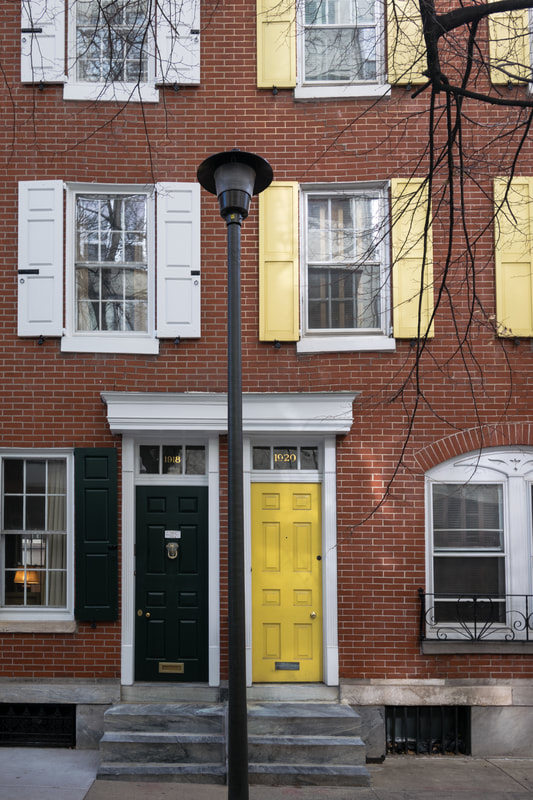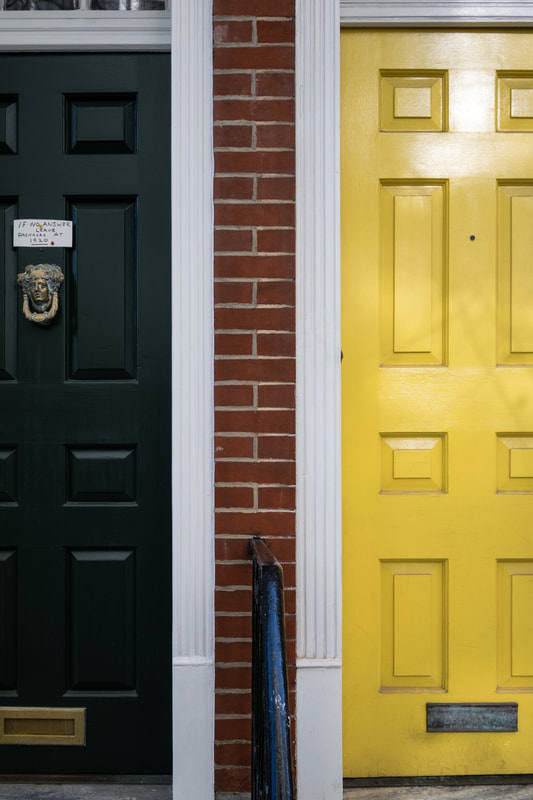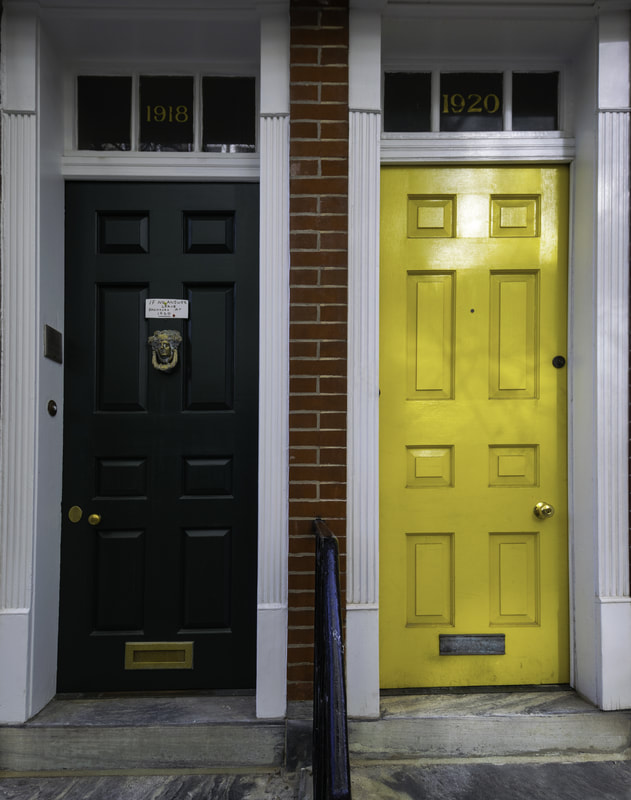I like using the wide angle lens, and spent time working with the Nikkor 1-20mm f/4.5-5.6 G lens. I was told originally that unless I was using it for landscape, I would not find it useful. However, while it certainly has its uses in landscape, it is a vital component of the urban photographer’s kit.
In Philadelphia’s Locust Street, I found a pair of photogenic doors. I did not want to angle them but even with at 20 mm I could not get them both in at frontal view without having a lamppost between them. Here is that image from across the street, not cropped, but processed in Lightroom with basic adjustments and with perspective straightening. If I wanted to use this image, I felt I would want the full lamppost to at least make that part of it rather than just a cut-off gray pole:


